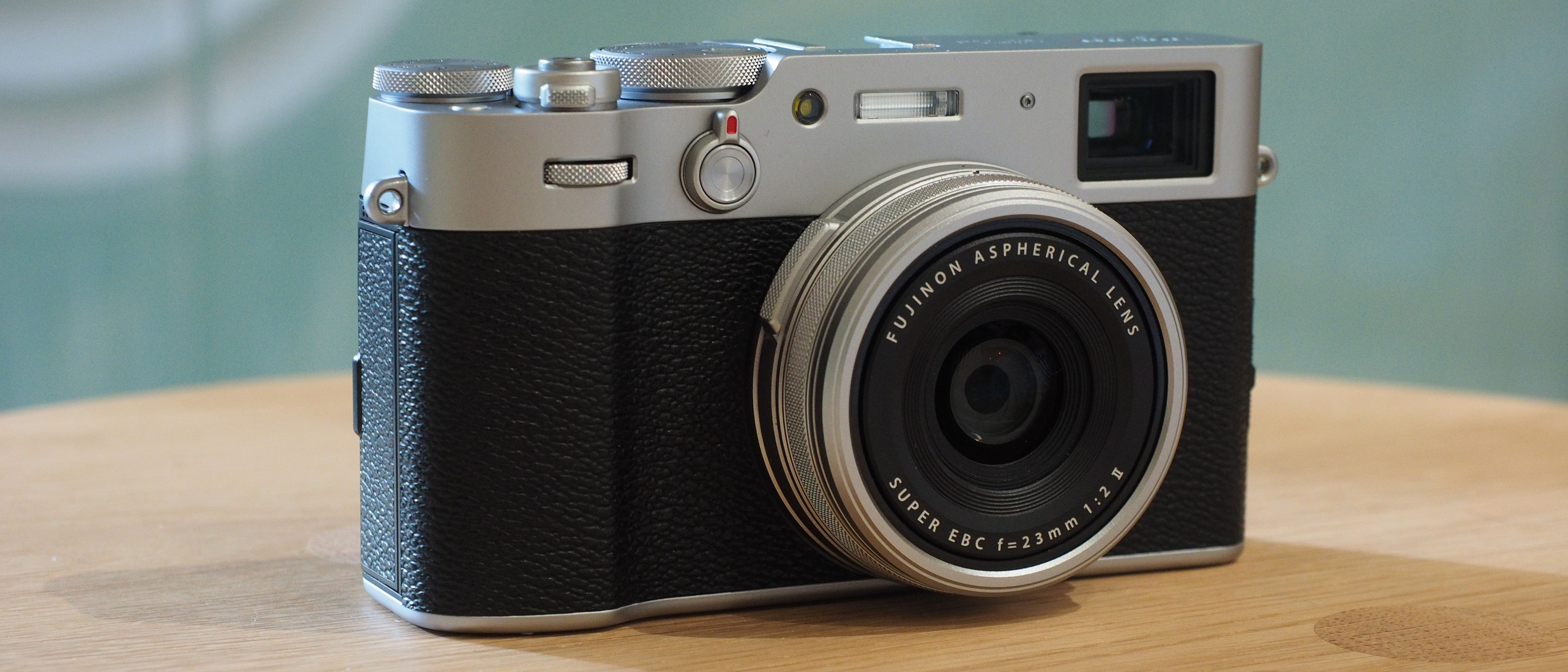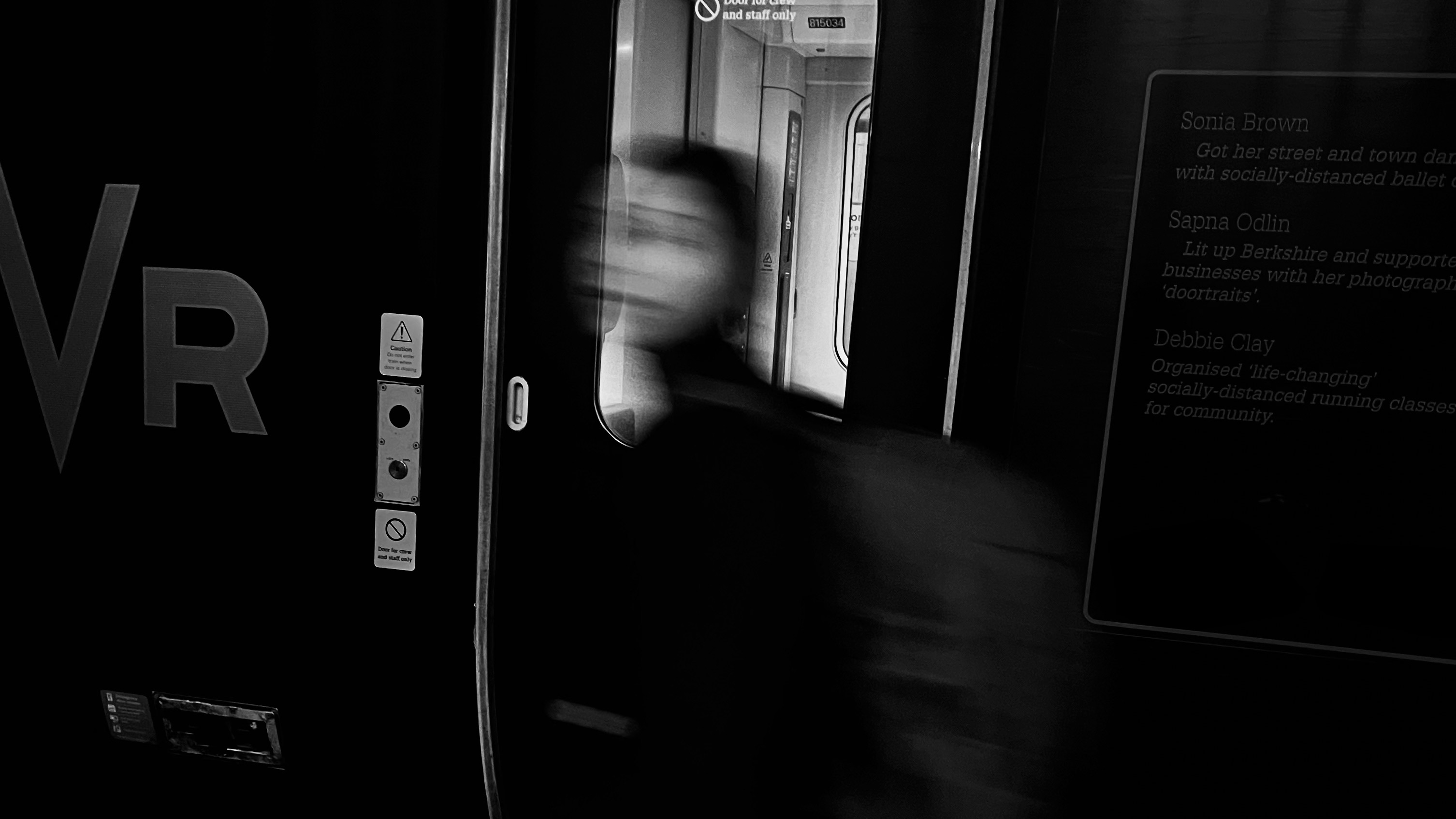Digital Camera World Verdict
We were expecting Fujifilm to put its latest 26.1-megapixel sensor into the new X100V, but the company has done a lot more besides. The X100V has a new, sharper lens to do justice to the latest sensor and the tilting touchscreen on the back makes this camera much easier to use at awkward angles, without compromising its slimline design. The improved autofocus and 4K video capabilities bring this classic camera design right up to date.
Pros
- +
Slim and pocketable
- +
26.1MP APS-C sensor
- +
New tilting touchscreen
Cons
- -
Non-interchangeable lens
- -
No optical stabilization
- -
Luxury price
Why you can trust Digital Camera World
The Fujifilm X100V is part of Fujifilm’s X series camera range but a bit of an outlier. Unlike other X-series cameras, it doesn’t take interchangeable lenses. Instead, it has a fixed 23mm f/2 lens (35mm equivalent) which offers a classic focal length for everyday use and street photography, and a design slim enough to slide into a jacket pocket.
The X100V is the fifth version of this design, and has Fujifilm’s latest 26.1-megapixel X-Trans processor, a new and superior lens and a new tilting touchscreen. There are some ergonomic enhancements too, but fundamentally this is the same design that has developed a cult following amongst enthusiast and pro photographers. It's clearly set to be one of the best Fujifilm cameras for fans of the brand, and certainly one of the best compact cameras for enthusiasts. The fixed focal length lens limits it a little as a travel camera, but its slim body certainly makes it portable enough.
The X100V has Fujifilm’s unique hybrid optical/electronic viewfinder which you can switch between with a lever on the front, and external shutter speed and lens aperture dials straight from the ‘old days’ of film cameras. It even has an external ISO dial to go with them.
The fixed lens distinguishes it from Fujifilm's X-mount mirrorless cameras like the X-T3 and X-T30, but the hybrid viewfinder is shared by the Fujifilm X-Pro3 – you could think of the X100V as a slimmer, lighter and more affordable alternative to the X-Pro3 with a fixed lens rather than interchangeable ones.
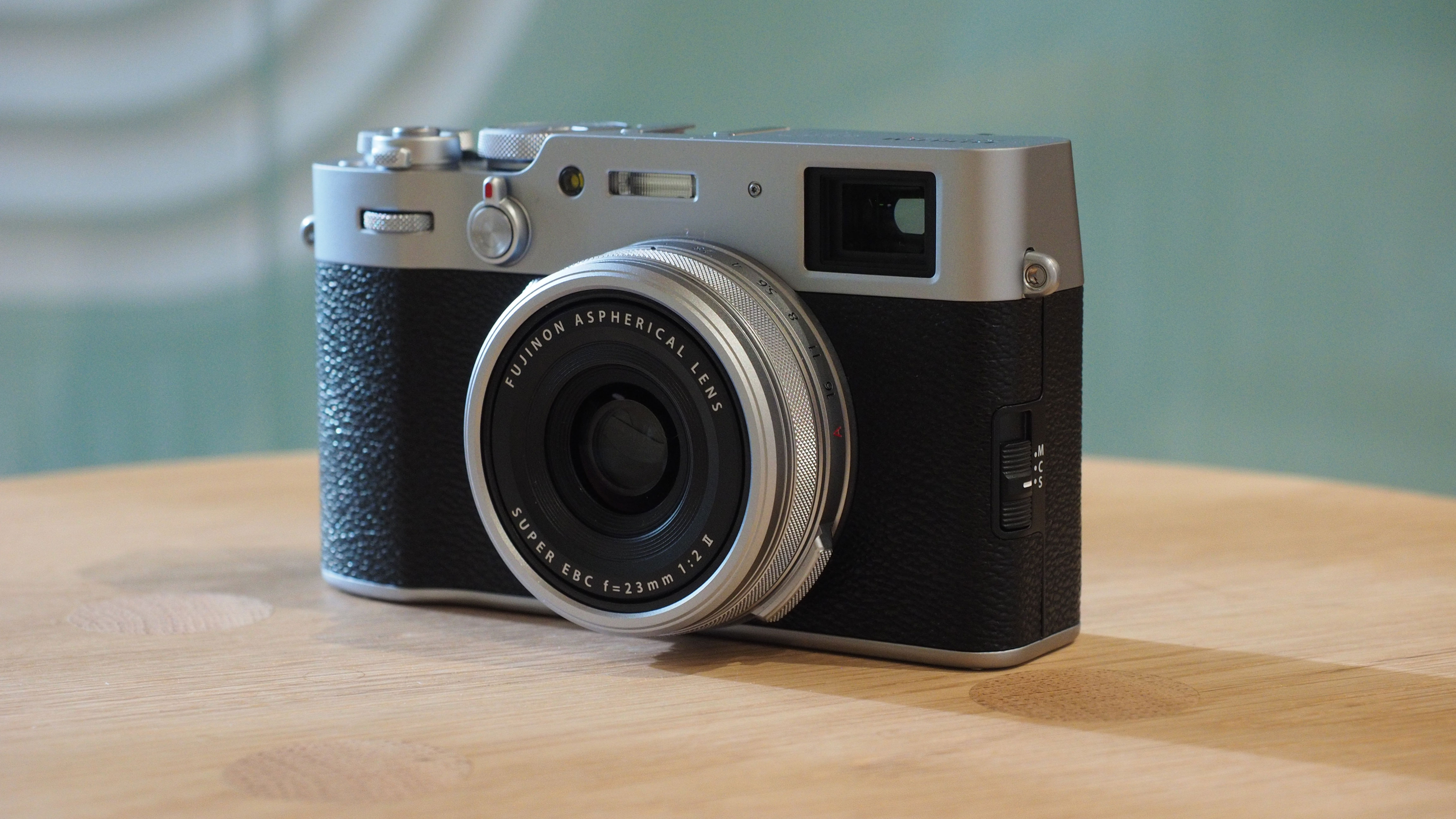
Specifications
Sensor: 26.1MP APS-C X-Trans CMOS 4
Image processor: X-Processor 4
Autofocus: 117-area hybrid phase/contrast AF
ISO range: 160-12,800 (exp. 80-51,200)
Max image size: 6,240 x 4,160
Metering modes: 256-zone, multi, spot, average, center weighted
Video: C4K/4K UHD, 30/25/24p
Viewfinder: Hybrid OVF/OLED EVF, 3.69m dots
Memory card: SD/SDHC/SDXC (UHS I)
Max burst: 11fps
Connectivity: Wi-Fi, Bluetooth
Size: 128.0 x 74.8 x 53.3mm
Weight: 478g (including battery and memory card)
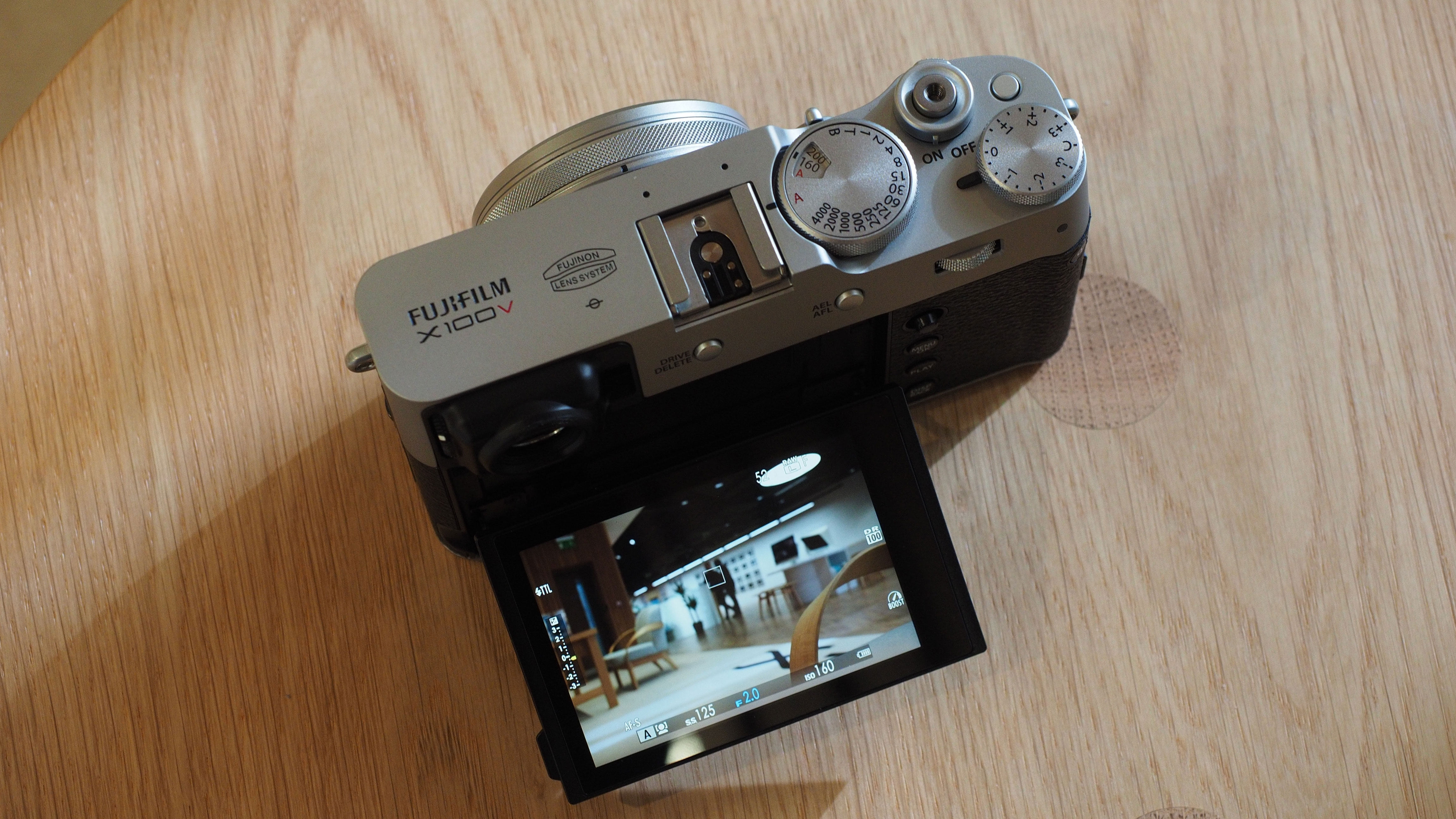
Key features
There are several new features on the X100V, so let’s start with the lens. Fujifilm acknowledges that the original 23mm f/2 lens needed an update to do justice to the latest sensors, and says the new lens offers better resolution and lower distortion. You can’t change lenses on this camera, but you can use Fujifilm’s optional WCL-X100 II wide conversion lens to get a 28mm equivalent focal length, or the TCL-X100 II tele-conversion lens for 50mm equivalent.
It’s also possible to attach an optional AR-X100 adapter ring and the PRF-49 protection filter to make the camera weather-resistant. We’re told that the camera is largely weather-resistant already, and it’s just the lens needs the extra protection. (Fujifilm says that making the lens weather resistant too would have made it too bulky for this camera’s slim design.)
Inside, the X100V now has Fujifilm’s latest 26.1-megapixel APS-C X-Trans 4 back-illuminated sensor. This has a modest 2-megapixel increase in resolution over the previous model, but the chief advantage is a big improvement to the autofocus system, faster processing speeds and the 4K video capabilities.
Video features are becoming every more important for photographers and content creators, and the X100V can capture 4K at the usual 30/25/24p frame rates, but also 1080 full HD footage at up to 120fps. And for more advanced filmmaking, it can record 10-bit 4:2:2 quality video to an external recorder via its HDMI port.
The hybrid optical/electronic viewfinder has been upgraded in the X100V, but the biggest change to the viewing system is round the back of the camera, where the old model’s fixed screen has been replaced by a tilting touchscreen display.
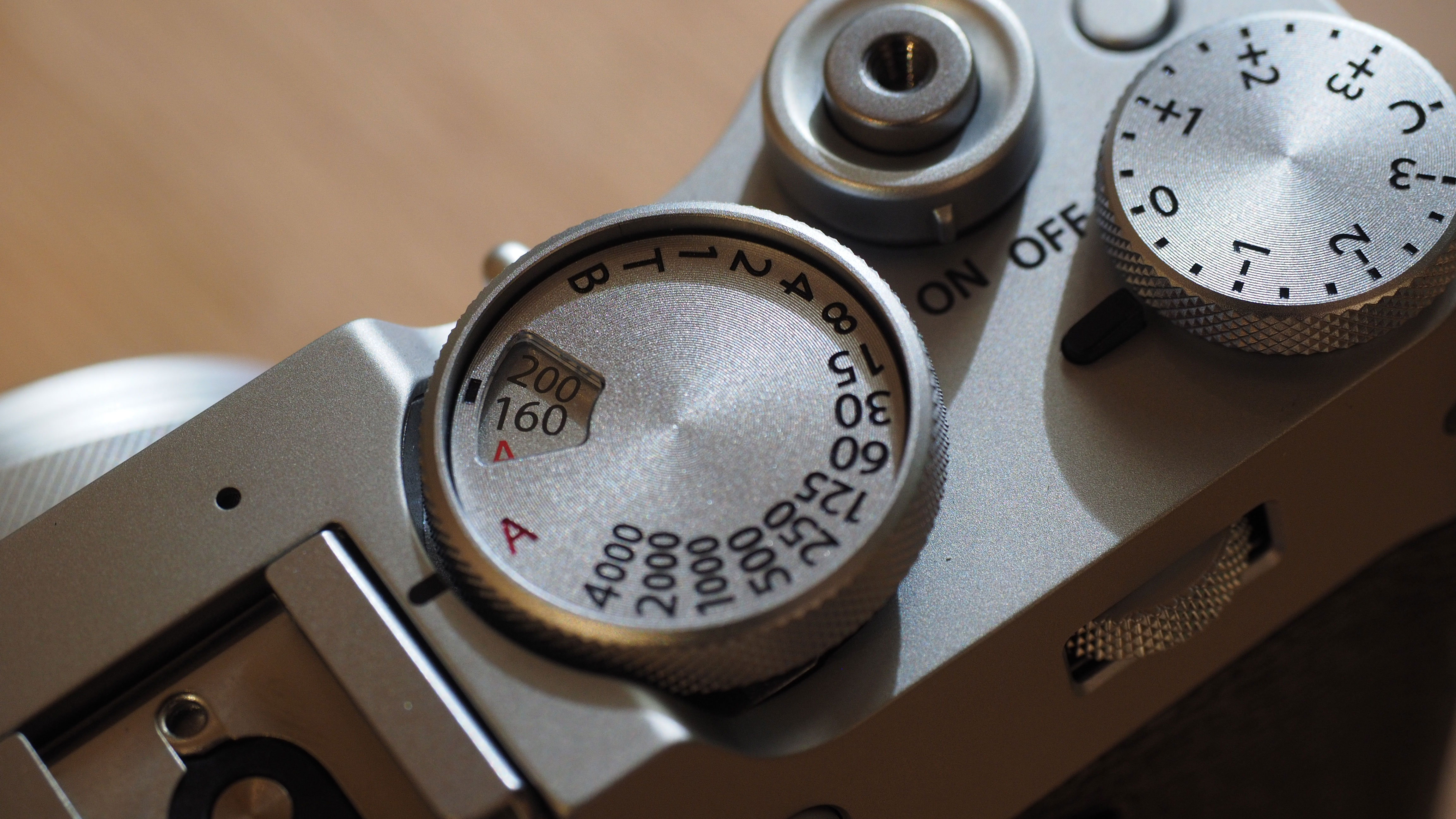
Build and handling
From a distance, the X100V looks just like the previous cameras in this series. It’s no smaller in width or height than the average mirrorless camera, but much, much slimmer. The 23mm f/2 lens protrudes only a small distance from the body, and this is a camera you could easily keep in a coat pocket.
It’s well made, too. The top and bottom plates are milled from single pieces of aluminium and the body has a classy-looking ‘Alumite’ satin finish (it will also be available in black).
Close up, the differences from previous models become obvious. The controls on the top plate have a neater, ‘levelled off’ look, and the ISO dial now stays up when you pull it up to change the setting – previously, it was spring-loaded and trickier to use. This sounds like a small point, but will be exciting news to the many fans of the X100 series cameras.

Round the back, the screen sits so flush with the camera body you could easily miss the fact it can be flipped out and tilted. There’s no D-pad on this camera, but there is a small joystick for AF point selection and menu navigation. Four-way D-pads seem to be disappearing from Fujifilm cameras (there isn’t one on the new X-T200 either) and they’re no great loss because many of their functions can be accessed via Fujifilm’s ‘Q’ menu anyway, and they are a little too easy to press by accident.
The Q button the X100V is surprisingly small, and located on the far right side of the body where your thumb rests. It’s not that easy to find by touch, but it’s likely you’ll soon get used to its position. You also have to hunt around to find the focus mode switch, which is in an unusual position on the left side of the body.
The hybrid viewfinder is quite fascinating. In EVF mode, it’s sharp, clear and undistorted – this is a high-quality electronic display. In OVF mode, however, the magnification switches to show a wider view of the scene with bright framing guides a little way in from the edges.
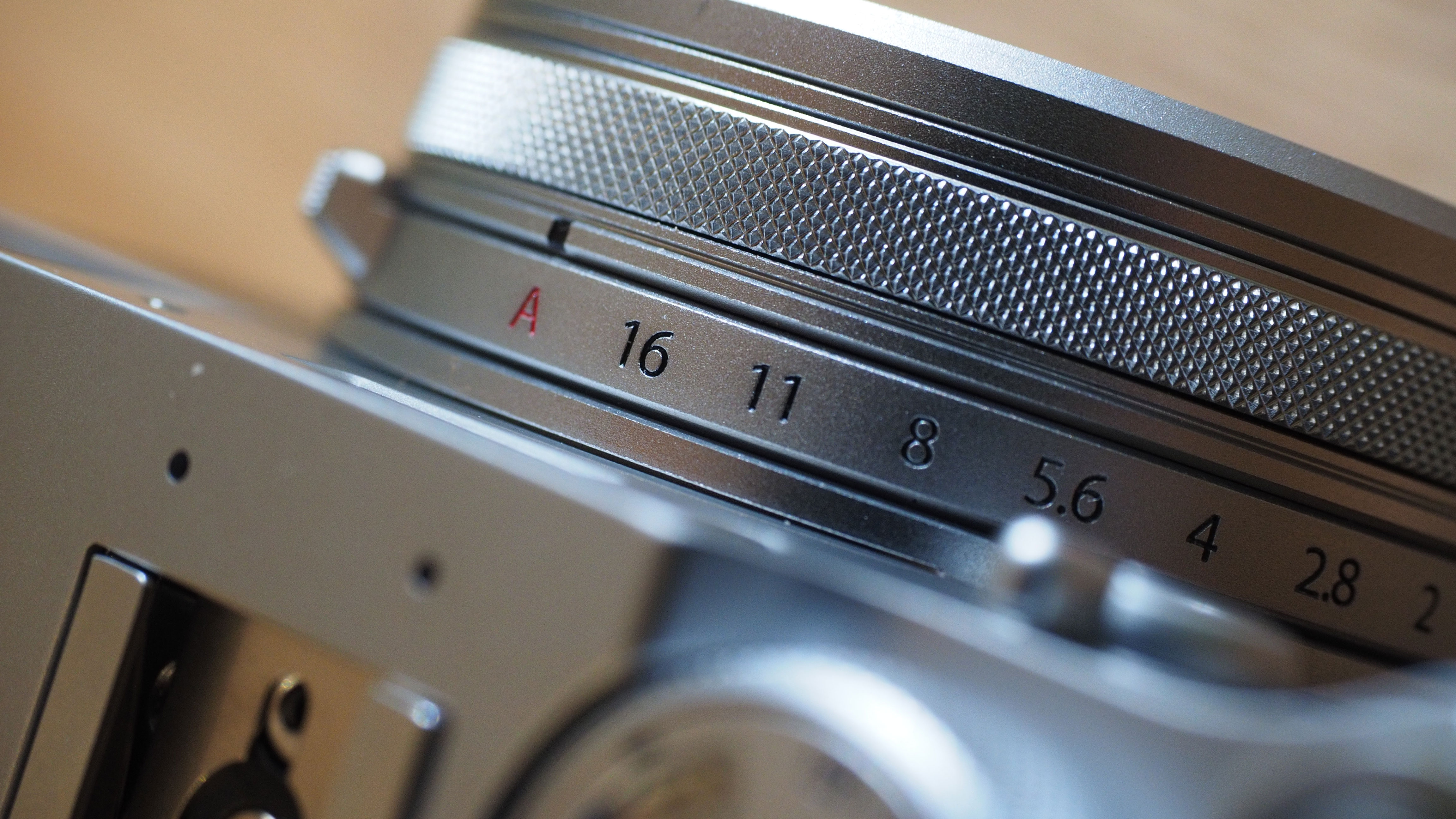
There is some distortion in the OVF mode, but that’s soon forgotten – and what we do like is that you can see what’s happening outside the frame and anticipate fast-moving subjects much more easily. The hybrid electronic/optical display also means you get much more shooting information around the edges of the framing guide that you do with a conventional optical ‘finder.
Otherwise, the X100V is very much like its predecessors to use. The external exposure dials encourage you to pay much more attention to shutter speeds and apertures (and their creative potential), and the slim body makes it a perfect everyday take-anywhere camera. Its build quality is terrific and the X100V really does feel like a premium product, and while it might not be designed specifically for video, its slim body and manageable weight mean it works well on a mid-size gimbal too.

Performance
First impressions are that the new lens is visibly sharper at close range and wide open than its predecessor, which was a bit weak in these situations. The new lens does actually focus very close indeed, so that although it’s not a true 1:1 macro lens, it can still capture shots of small objects.
We were hoping the new lens would cure another criticism of the old one – its sluggish and noisy autofocus. It is a lot snappier, though it still doesn’t quite have the speed and silky smoothness of Fujifilm’s best X-mount lenses. If that’s the price you pay for an f/2 lens slim enough to make this camera pocketable, though, it’s a perfectly acceptable compromise. Indeed, in real world use, even if it lacks the finesse of some X-mount lenses it is fast and, more to the point, doesn’t seem to miss a shot or 'hunt' for focus.




The image quality from the Fujifilm X100V is excellent, and we wouldn't expect anything else. The colors are excellent, and despite having more megapixels than most of its APS-C rivals, the X100V maintains good image quality right across the ISO range.
At the time of testing we were still waiting for Adobe to support the X100V's raw files, but the latest version of Capture One does, and also does a superb job – Phase One and Fujifilm have close ties these days. Our sample images received only slight editing, except where indicated.
Video
The Fujifilm X100V and its fixed prime lens might not be the obvious choice for a video camera, but the video quality is really nice. The 200Mbps bitrate is very decent from what is essentially a small point and click camera. Fujifilm has even included a shutter speed of 1/48 so dedicated movie shooters can capture 24p with exactly half the shutter speed – the ideal 180-degree 'shutter angle'. You can even shoot in DCI 4K at 17:9, which is what we used for our sample video below.
There are a few annoyances for video shooters. First, there's just a single UHS-I card slot, and changing both the memory card and the battery means you have to unmount the camera from any tripod or gimbal plate. This is a factor because this camera has neither in-body nor in-lens stabilization, making a tripod or gimbal a pretty important accessory.
It was a bit of a disappointment, too, to find that the in-build ND filter appears to work only for stills photography and not for video. That's a shame because we were hoping to get some nice shallow focus footage with this camera.
We did also find that continuous face autofocus out in the field is a little slow and occasionally erratic – this was with both face detection and continuous AF enabled. For static shots, the autofocus is very fast and reliable, but with anything moving it does struggle a bit. It's by no means the only combined stills/video camera with this issue.
Lab data
We compared the X100V to rival fixed lens APS-C compact cameras including the Canon G1 X Mark III and Ricoh GR III. But for the same money as the X100V there's no shortage of capable compact system cameras available, which in the case of the Olympus OM-D E-M5 III can be fitted with an equally svelte lens.
Resolution:
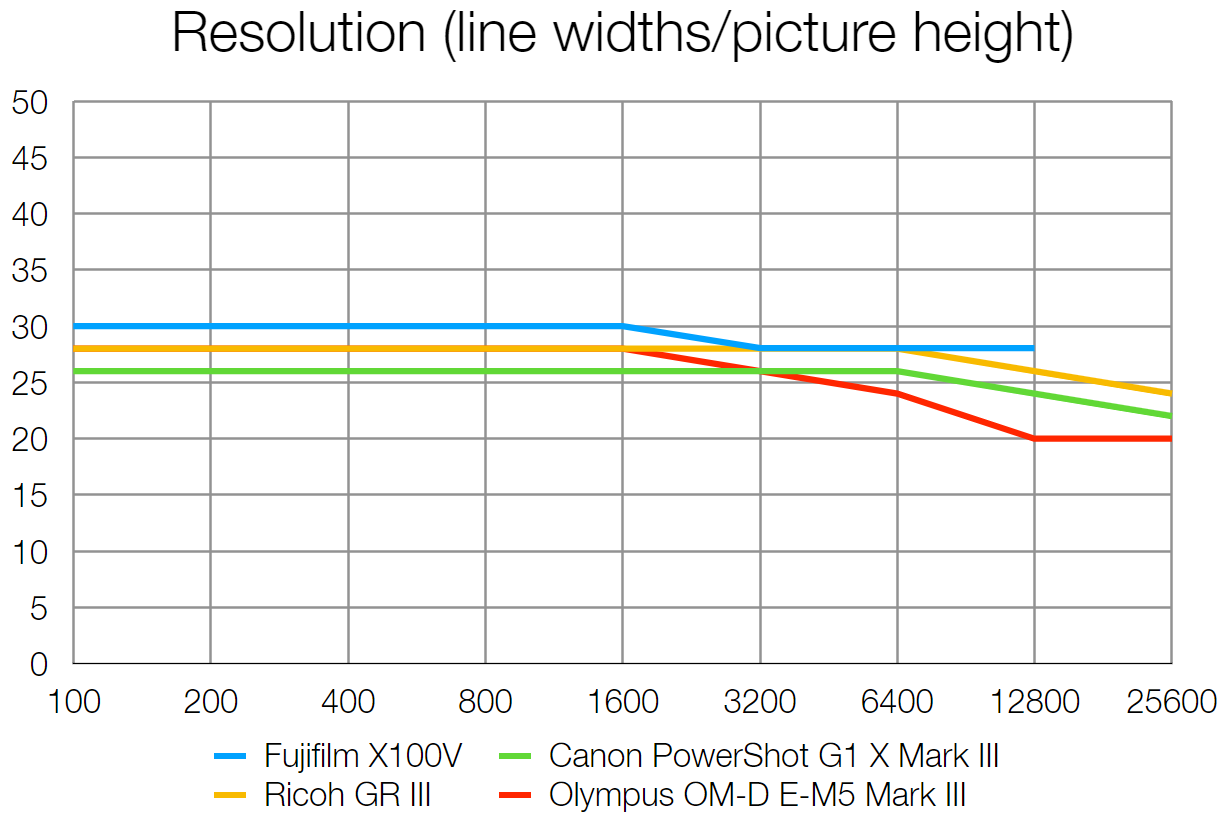
With its 26.1MP sensor, it's no surprise that the X100V can resolve more fine detail than the 24.2MP Ricoh GR III and Canon G1 X III. But it should be noted that the X100V manages to maintain excellent image clarity right to the top of its ISO 12800 sensitivity scale, rendering even this high sensitivity completely usable in real world shooting.
Dynamic range:
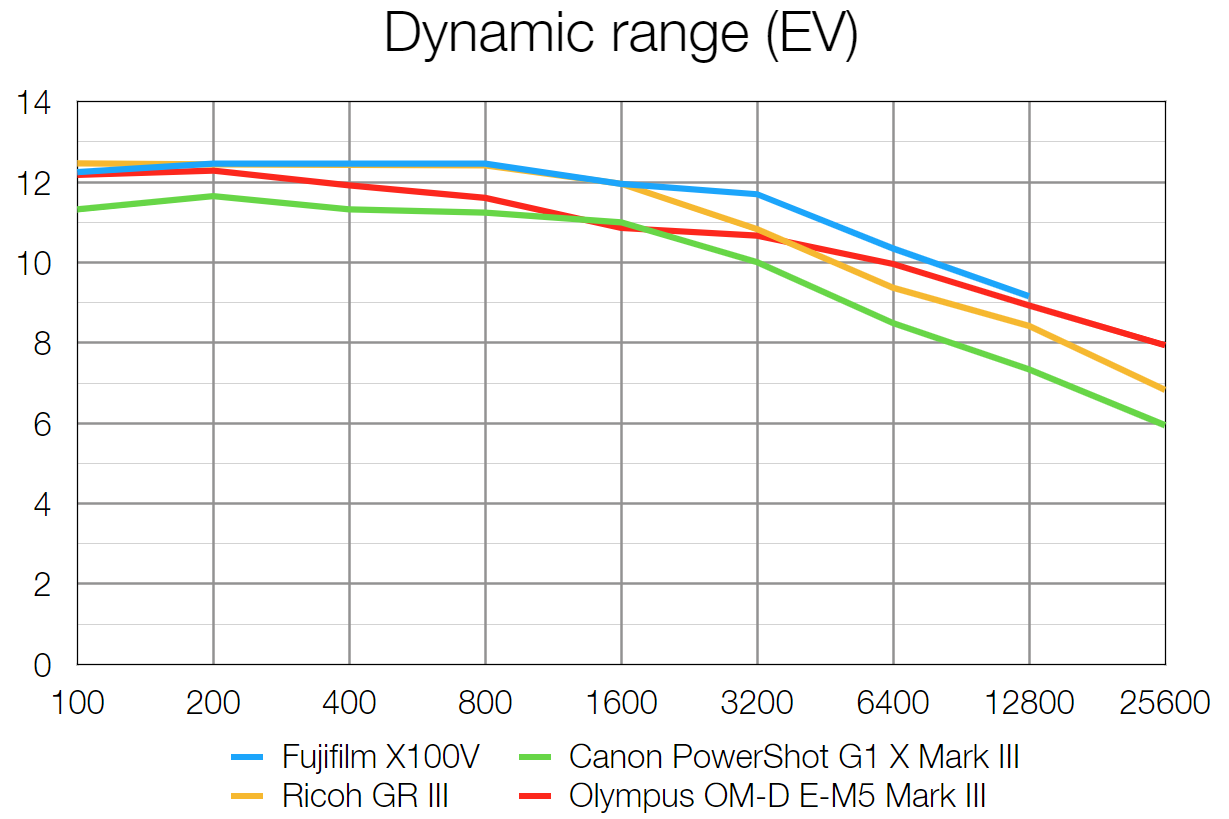
Fujifilm's X-Trans sensors have traditionally delivered wide dynamic range, and the X100V's X-Trans 4 sensor is no exception. It performs almost identically to the Ricoh GR III up to ISO 1600, but pulls ahead at higher sensitivities, with almost 12 stops of dynamic range at ISO 3200 - hugely impressive for its class.
Signal to noise ratio:
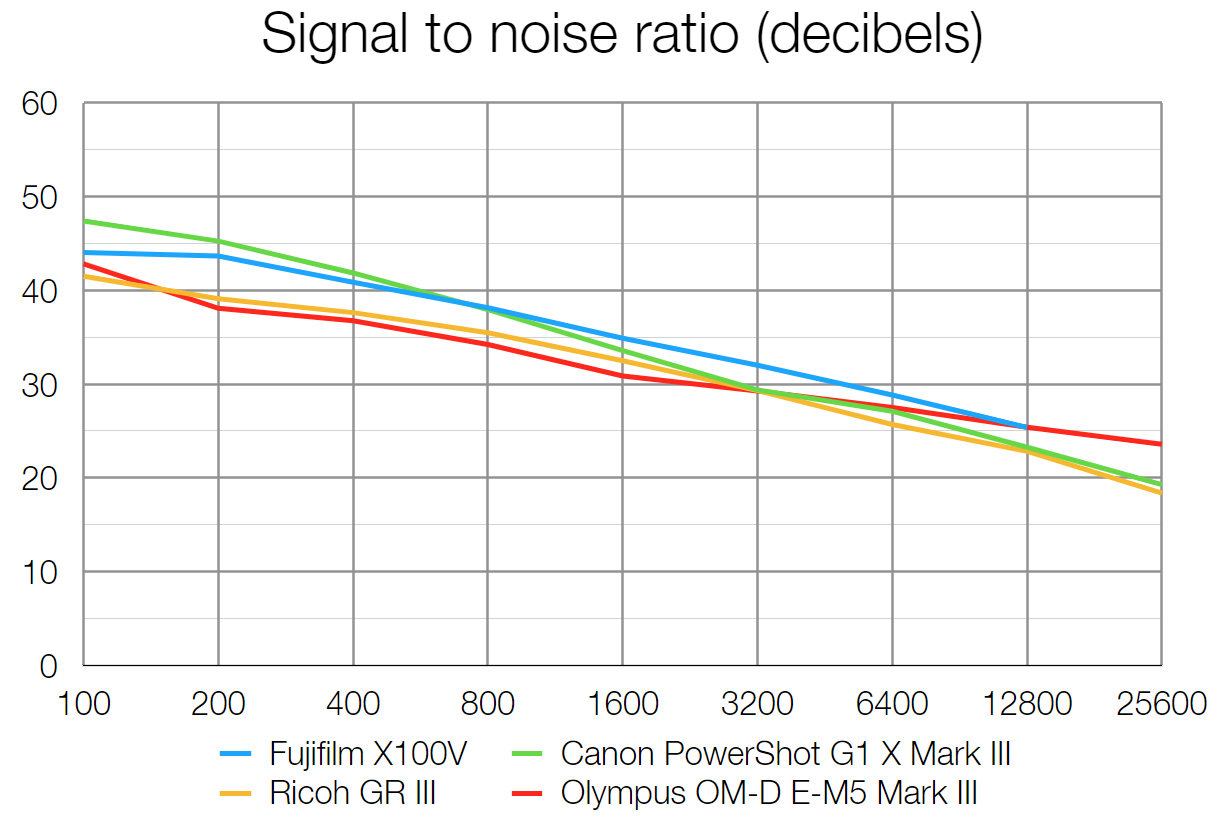
Our signal to noise test measures image clarity, specifically the ratio of the actual image 'data' you want to capture, versus the image noise that you don't want, but will inevitably be visible when shooting at higher ISO sensitivities. The higher the score at a given ISO sensitivity, the better.
The X100V can't quite match the clarity of the G1 X Mark III's images at low sensitivities. However, image quality differences in this test are more noticeable at higher ISOs, where the Fujifilm delivers images with less noise than those from rival cameras, though the differences are subtle.

Verdict
We were expecting Fujifilm to put its latest 26.1-megapixel sensor into the new X100V, but the company has done a lot more besides. The X100V has a new, sharper lens to do justice to the latest sensor and the tilting touchscreen on the back makes this camera much easier to use at awkward angles, without compromising its slimline design. The improved autofocus and 4K video capabilities bring this classic camera design right up to date.
Read more:
• These are the best Fujifilm cameras right now
• The best APS-C compact cameras today
• The best compact cameras for keen photographers

Rod is an independent photography journalist and editor, and a long-standing Digital Camera World contributor, having previously worked as DCW's Group Reviews editor. Before that he has been technique editor on N-Photo, Head of Testing for the photography division and Camera Channel editor on TechRadar, as well as contributing to many other publications. He has been writing about photography technique, photo editing and digital cameras since they first appeared, and before that began his career writing about film photography. He has used and reviewed practically every interchangeable lens camera launched in the past 20 years, from entry-level DSLRs to medium format cameras, together with lenses, tripods, gimbals, light meters, camera bags and more. Rod has his own camera gear blog at fotovolo.com but also writes about photo-editing applications and techniques at lifeafterphotoshop.com
